At the doors of December, all the cities of Galicia dress up with the typical Christmas lights. Garlands of lights and large illuminated trees are installed in the cities and villages that enrich Galicia and the Camino de Santiago at Christmas. Traditionally, at the end of November or the beginning of December the Christmas lights are switched on, bringing that special magic that Christmas has. As you probably know, walking the Camino in December allows you to enjoy one of the most important Christmas light displays in Spain, which is in Galicia. However, we can admire many more across all the cities and towns through which the different Jacobean routes pass. Let’s learn more about the main 2025 Christmas light displays in Galicia, one of the attractions of doing the Camino de Santiago in winter.
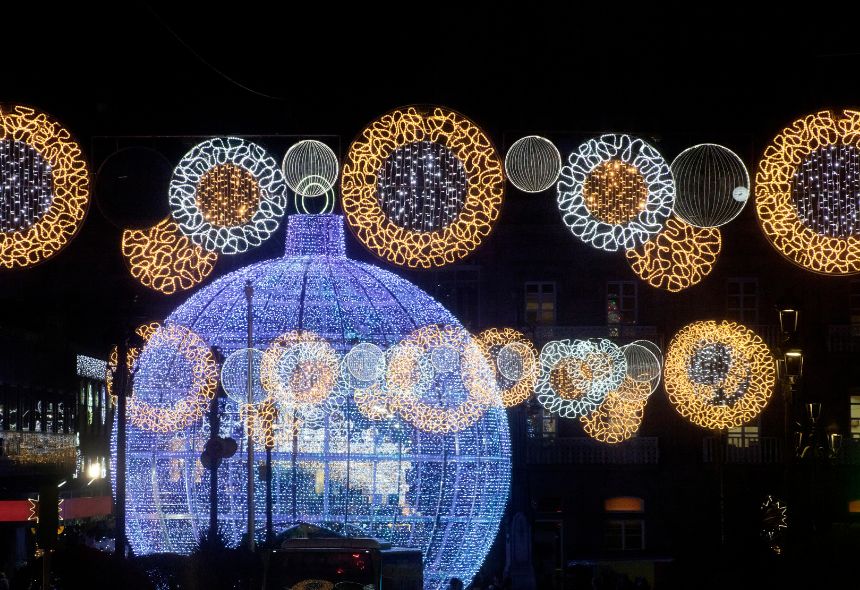
Christmas lighting in Vigo
Christmas lighting in Vigo
Since 2017, Vigo’s Christmas lighting has been news every year. Its mayor Abel Caballero invests heavily, so much so that it has become a top tourist draw at Christmas. Since the end of the last century the streets of the “olive city” — through which the Portuguese Coastal Camino passes — have been illuminated. But what the mayor has achieved in recent years is to offer “the greatest Christmas ever experienced in Vigo.” And, he adds, “we will witness one of the greatest tourism phenomena ever seen in Spain.”
What to see and do at Vigo’s Christmas lighting
In 2025, Vigo’s lights turn on Saturday, November 15 at 20:00 hours at Porta do Sol, the city’s nerve center. The protagonist once again is the large Christmas tree of lights, over 45 metres tall, and you can enter inside it to experience the lighting from a unique perspective.
The city will feature almost 12 million LED lights spread across more than 460 streets and squares, with around 7,000 decorative motifs. Main neighbourhoods and avenues fill with light tunnels, giant baubles, walk‑through gift boxes, and all kinds of festive figures, creating a true urban theme park.
Christmas markets, a big photocall, Santa Claus and “Three Wise Men” huts, exhibitions, children’s attractions and a Christmas‑themed circus are all there. The large panoramic ferris wheel, visible from much of the city, completes the scene and allows you to enjoy Vigo lit up from above. As you can see, the atmosphere is guaranteed with the Christmas activity programme in Vigo. Don’t miss it — it is, without a doubt, one of the great Christmas highlights in Galicia and Spain.
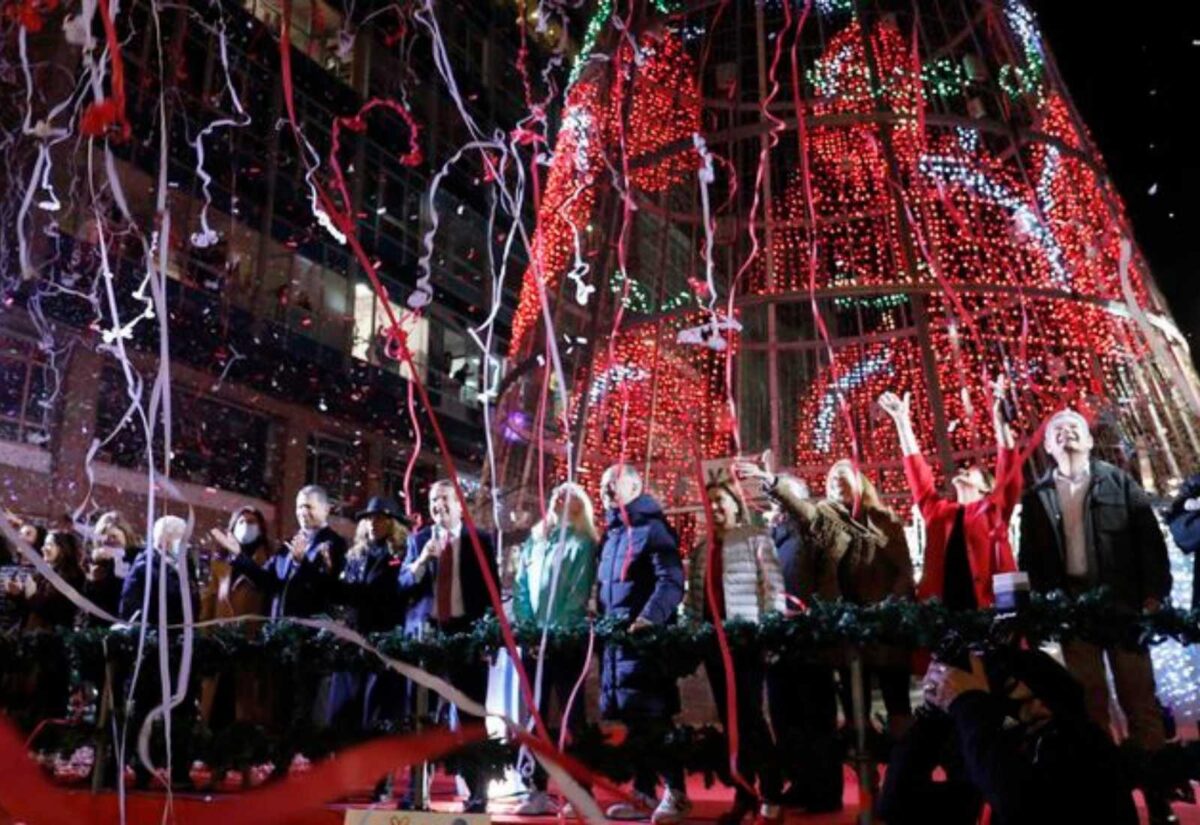
Vigo Christmas lights
Christmas lights in Santiago de Compostela
In Santiago de Compostela the Christmas lighting may not surpass Vigo’s, but it does have its tradition and classic elements. As if we were talking about a Camino route, kilometers of light blankets adorn the historic centre and other points of the city. The large Christmas tree in Plaza del Obradoiro remains a staple in the festive décor and lighting of the Jacobean capital.
In 2025, the Christmas lights are scheduled to be switched on November 28. After the Apostle’s Day festivity and the Ascension, Christmas becomes the city’s third great celebration. Streets, squares and some rural areas will be illuminated with hundreds of lights, while the historic centre becomes a perfect stage for evening strolls.
There will be “light postcards” in the Alameda and other parks, plus a Christmas market spread between the centre and various shopping areas, offering crafts, gastronomy and activities for all ages. No shortage of the traditional nativity scene of San Fiz de Solovio, along with other nativity scenes displayed in churches and landmark spaces.
A complete programme of activities to enliven Santiago’s Christmas: classical and popular music concerts, the San Silvestre run, New Year’s Eve party in Plaza del Obradoiro, and the Three Wise Men parade that travels the city’s main avenues. If you finish your route, for example the French Camino from Sarria, you’ll have the luck to arrive to a city that lives these dates with special charm.
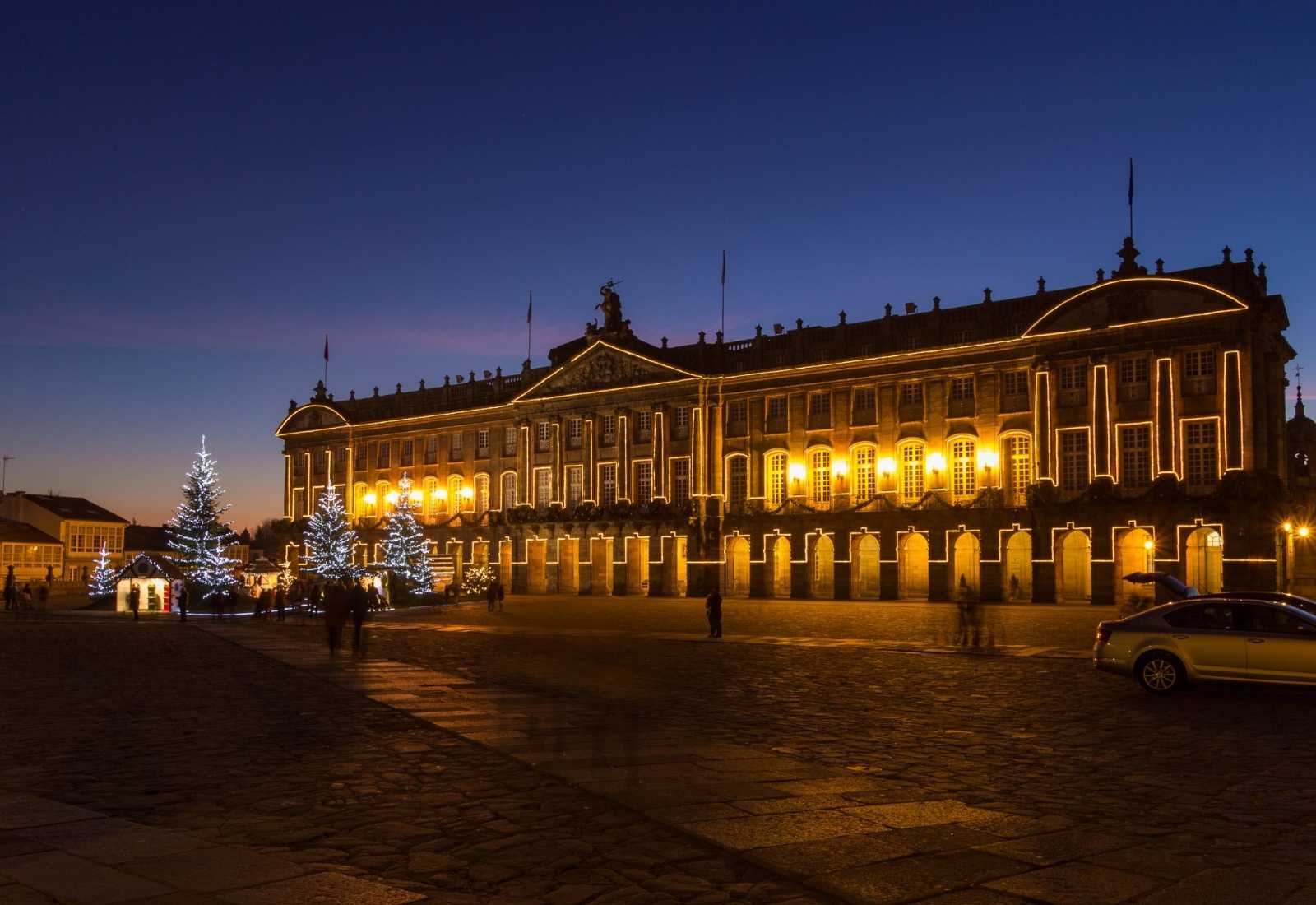
The Obradoiro square at Christmas
Christmas lighting in A Coruña
The city of A Coruña also offers its own lights, increasingly impressive. In 2025, the Christmas season in A Coruña officially begins on November 28 in María Pita Square, where the light switch‑on takes place with a very special guest: Bebeto, a historic Deportivo player, will press the button together with children of the city.
This year stands out with nearly 3 million LED lights and more than 500 arches spread across the city. María Pita becomes a genuine Christmas village with markets, huts, gastronomy and daily activities. The A Coruña Marina preserves its traditional light sphere as a major photocall, while in Los Cantones a giant tree lights up the surroundings of the Obelisk with a renewed aesthetic.
Additionally, the city adds light‑ceilinged areas over plazas such as Campo da Leña or Azcárraga, and reinforces lighting in neighbourhoods and shopping areas. If you choose the English Camino starting in A Coruña, you will be able to combine your stages with a visit to the lights and enjoy the Christmas scheduled activities.
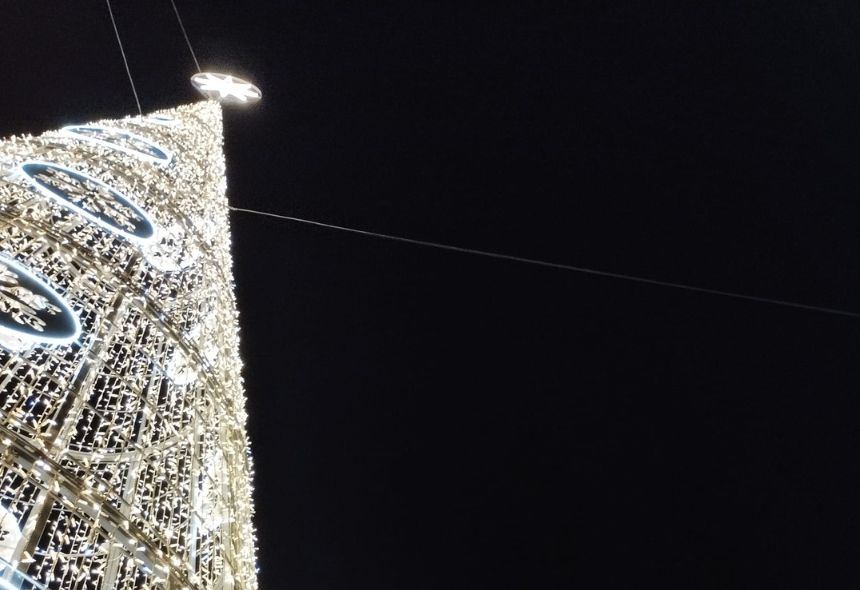
Illuminated Christmas tree
Lights in other Galician capitals and Christmas programming
The Christmas lights in other Galician cities are also well worth seeing. They are a perfect excuse to extend your trip by one or two days and enjoy the winter atmosphere in Galicia.
Pontevedra also inaugurates its lighting on December 5 in Plaza de España. The city dresses up like a fairy‑tale with its large Christmas tree and the “Poboado de Nadal,” a Christmas village with huts, decorations, and family activities. If you choose the Portuguese Camino starting from Tui, you can plan to arrive in the city and enjoy the lights at the same time.
Lugo, a key city of the Primitive Camino, has been one of the first to switch on part of its lights: since November 5 the decorations in Praza de Santo Domingo shine, with a false ceiling of golden bulbs that anticipates the festive atmosphere. Gradually the rest of the lights in the Plaza Mayor and the streets around the Roman wall are being completed, creating a perfect setting for a stroll.
Ourense, through which the Sanabrian Camino passes, will celebrate its light switch‑on on Friday, December 5 at 20:00 hours in Plaza Mayor. This year, people with visual impairments will take the spotlight — members of ONCE will participate in the official ceremony. There will be live music, a large illuminated tree and a lively atmosphere in the surroundings: ideal to pair with an afternoon at the thermal baths.
In Ferrol, where the English Camino also begins, Christmas comes early. In 2025 the lights will be switched on November 28 at 20:00 hours in Plaza de Armas, with a large tree about 20 metres tall as the protagonist. The council has expanded the decoration with more light arches and motifs across neighbourhoods and rural zones, turning the historic centre into a very pleasant walk at night.
Other Christmas corners in Galicia
Beyond the major cities, Galicia has towns and places that specialize in living Christmas in a very special way, keeping traditional nativity scenes or presenting live nativity displays. They are perfect plans if you want to combine your Camino with a short getaway — examples of how Galician Christmas goes far beyond the big capitals.
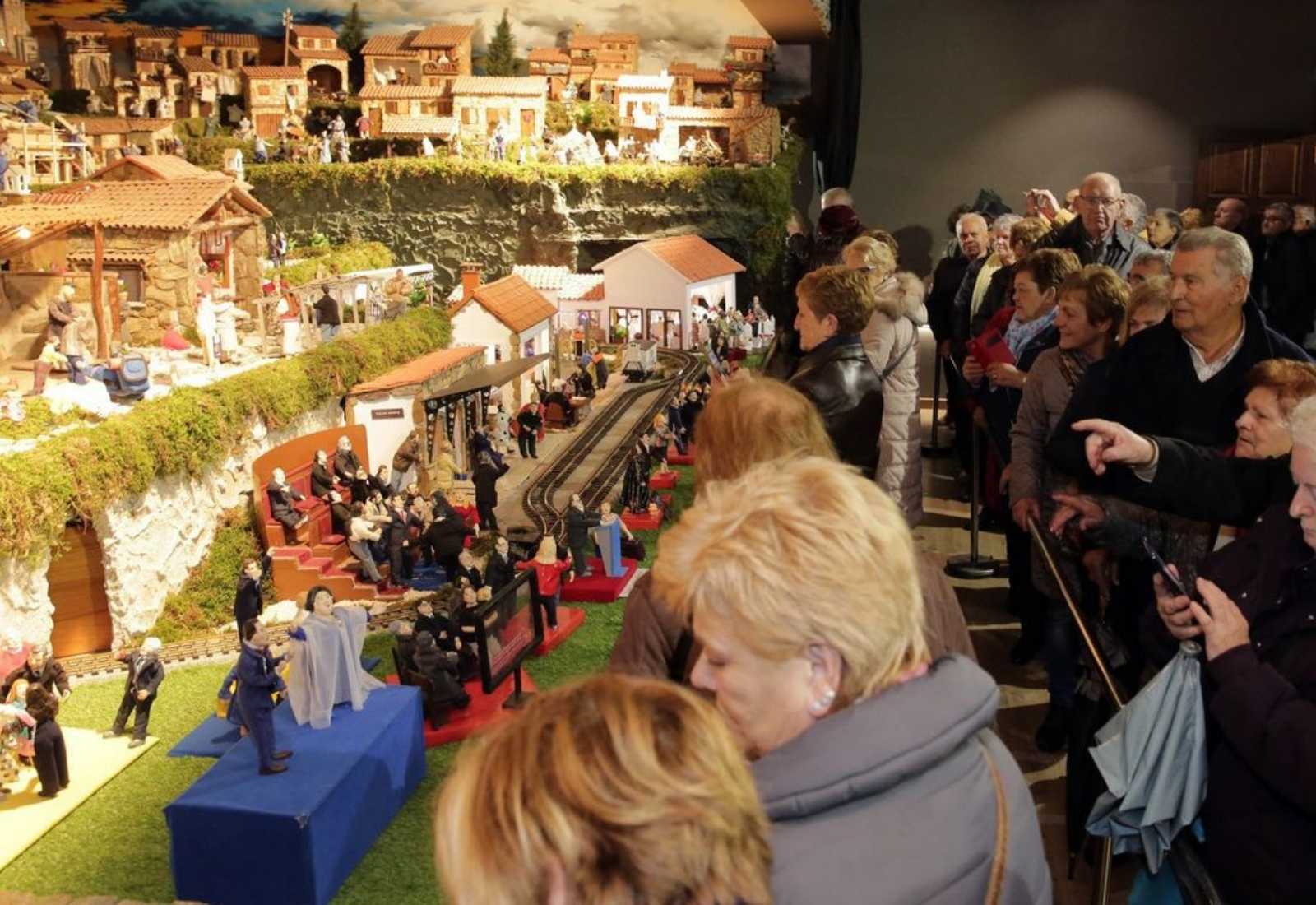
Animated Nativity scene
The tradition of Christmas lights
In Roman times, streets were already lit up in celebration of the Saturnalia festival, in honour of Saturn, god of agriculture. It was celebrated between December 17 and 24, while December 25 marked the day of the Unconquered Sun and the winter solstice. The night was dangerous in ancient Rome, and to celebrate safely, urban spaces were illuminated. Something similar happened in the ancient Norse culture with the festival of Yule, which also commemorated the seasonal change. “The night became day thanks to people lighting the streets in the best possible way with torches, lanterns…”, explains historian Néstor F. Marqués regarding the Saturnalia festivities in Rome.
Origin of Christmas
In 313 AD, the emperor Constantine “legalized” Christianity within Roman society. In 325, the First Council of Nicaea established December 25th as the date of Jesus’ birth. Later, Pope Julius I confirmed this decision. Finally, Christmas was formally declared by Pope Liberius in the year 354. The term Christmas comes from the Latin nativitas meaning birth, and the popes intended to Christianise the pagan Romans by replacing their festivals with new ones. What better way to celebrate the birth of the Son of God.
How the first Christmas lights began
In the 18th century, wealthy German households adopted the custom of decorating Christmas trees with candles or lanterns. This custom gradually spread across Europe.
At the end of the 19th century, with the development of electricity and electric light, the first Christmas tree illuminated with electric lights appeared. In 1882, Edward Hibberd Johnson, associate of none other than Thomas Edison, invented special bulbs for Christmas trees. Initially, these bulbs were expensive and only accessible to the wealthy.
For this invention he is considered the father of Christmas lights. It wasn’t until the 1930s that they became affordable for broader social classes and their use began to generalise. Finally, from the second half of the 20th century, Christmas lights became widespread. So much so that, beyond homes, they started to decorate houses, shops, buildings and streets. Think of American movies: American culture has loved Christmas lights since the 1960s. This custom slowly spread across Europe, even reaching Japan by the end of the last century.
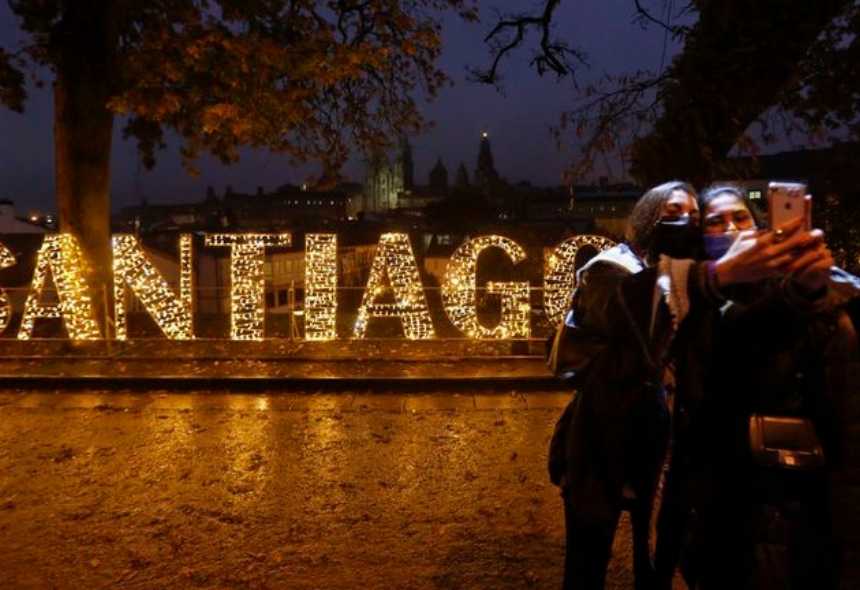
Christmas lighting of Santiago de Compostela
Lighting your Camino at Christmas
Doing the Camino de Santiago at Christmas is a different way to experience both the route and the holidays themselves. The lights turned on in cities and villages, the winter atmosphere, the smell of chestnuts and fireplaces, and squares full of decorations turn every stage into much more than just a walking stretch. For many people, walking during these dates means reflecting on the year that’s ending, opening space for new resolutions and enjoying a slower pace, with fewer crowds and more silence.
Whether in a big city full of lights and activities or in a small village decorated with care, each place contributes its own way of experiencing Christmas. In the end, beyond the number of lights or giant trees, what remains is the experience of walking under the winter illumination, sharing moments with others and letting the light, both literal and symbolic, accompany every step of the Camino.

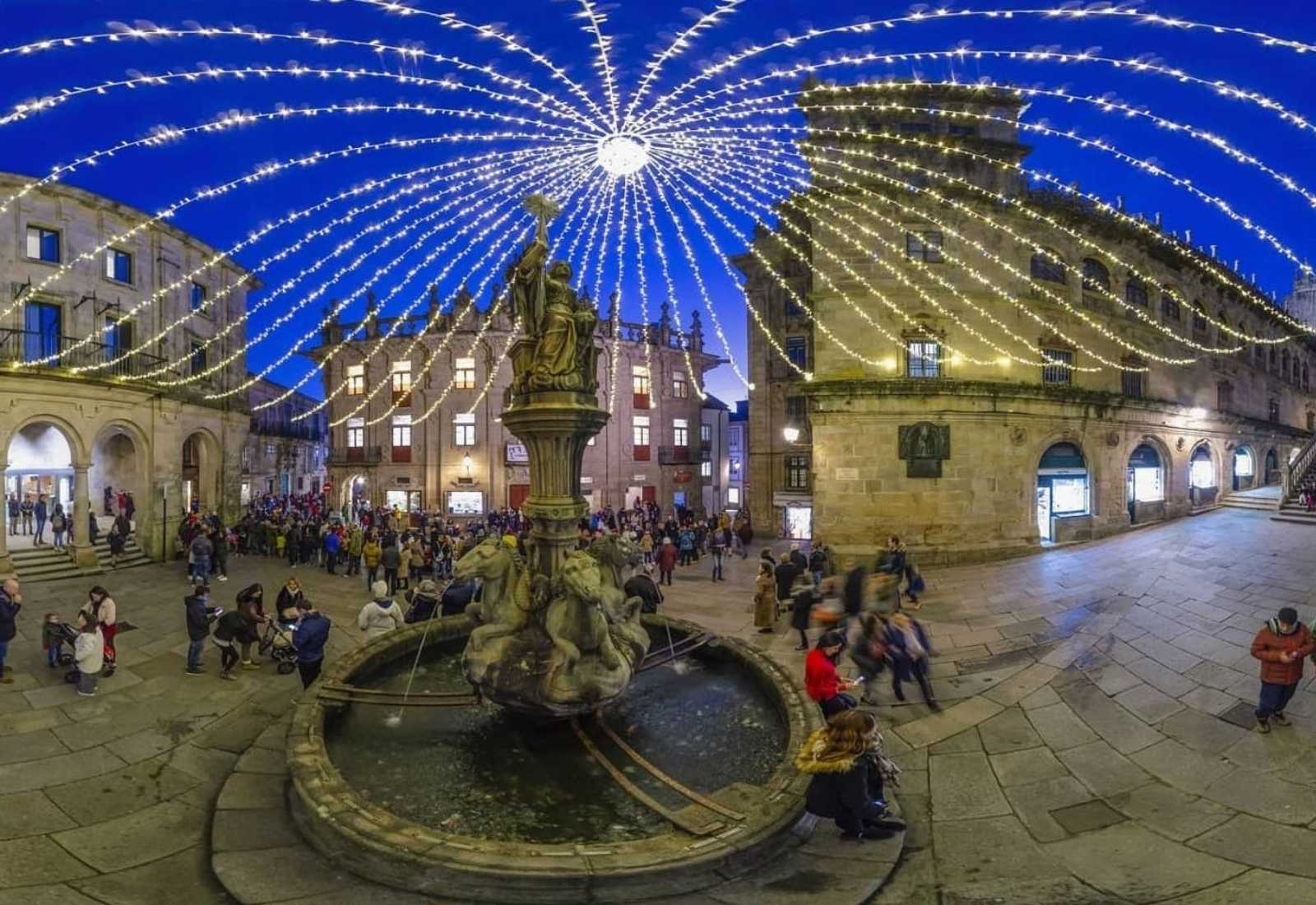










Leave A Comment